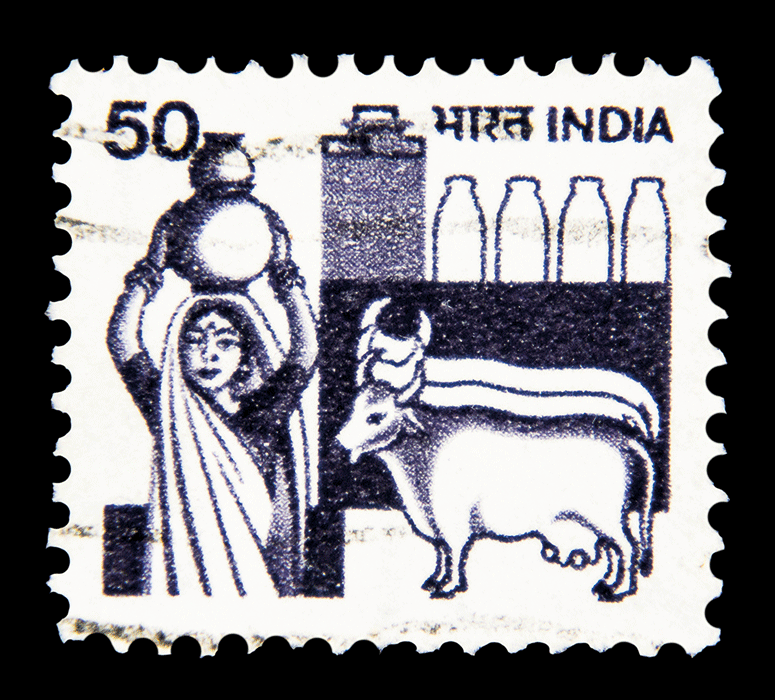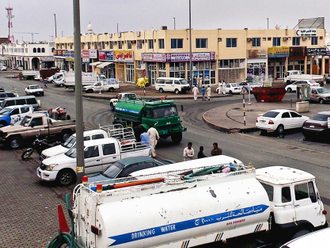India is among the world’s biggest food producers, but perhaps no nation has witnessed such a graph of extremes in agriculture. In the past 70 years, the sector circumvented a near crisis to later set a rapid pace of growth, ensuring food security for India’s 1.3 billion people today.
Before the 1960s, India relied on imports to meet its domestic grain needs. But droughts and a famine in Bengal in the mid sixties turned the focus on food grain sufficiency. Adopting high-yielding and disease-resistant seeds, and forming milk cooperatives helped food production to rise to over 400 per cent to match the population growth of 300 per cent.
Here are some key milestones.
GREEN REVOLUTION
The launch of semi-dwarf rice and wheat (shorter varieties that grow faster and are easier to harvest) in the mid 1960s heralded a green revolution. New policies led by Prime Minister Indira Gandhi, Agriculture Minister C. Subramaniam and scientist M. S. Swaminathan took nascent food technology from lab to land, says Bhagirath Choudhary, Founder-Director of South Asia Biotechnology Centre, New Delhi. “Farmers in northern India rapidly adopted semi-dwarf wheat and rice; it later became the food bowl of India.”
Wheat productivity nearly doubled from 827kg per hectare (kg/ha) in 1965 to 1,410kg/ha in 1975 and rice from 1,000kg/ha in 1965 to 1,700kg/ha in 1975.
The Small Farmer Development Scheme in the 1970s, along with irrigation systems, and a shift from demand-led patterns added to these gains, says Anil Kumar Sharma, Agriculture Advisor at MM Activ Sci-Tech Communications.
WHITE REVOLUTION
Gujarat’s milk farmers formed a cooperative in 1946, but it was only when Prime Minister Lal Bahadur Shastri personally witnessed its success in 1964 that he asked Dr Verghese Kurien, then General Manager of dairy products brand Amul, to set up the Dairy Development Board and replicate the initiative nationwide.
It laid the foundation for Operation Flood, a white revolution that transformed a milk-deficit country into the world’s biggest milk producer. Aided by clever marketing, the grass roots-led Amul brand is today a global success, supported by 15 state cooperative dairy federations, 189 district milk unions, 156,000 village dairy cooperatives and 15.2 million milk producers. By 2015, India produced 156 million tons (mt), up from 22mt in 1970.
DRYLAND CROPS
Indian agriculture is mainly rain-dependent, and nearly 60 per cent of crops are rainfed. Heterosis breeding or hybrid technology sparked cultivation of dry land crops in the 1990s. Production rose thanks to cross-breeding led by the development of hybrid varieties of pearl millet, sorghum and cotton that could survive despite erratic monsoon rains, says Dr Charu Dutta Mayee, former Agricultural Commissioner, Government of India. “The technology was extended to cross-pollinating crops and is now also used in self-pollinated crops such as rice and mustard. It gave rise to private seed companies and quality seed production,” he says.
Over 40 large and 200 small seed companies today engage more than a million people in the business in India.
MODIFIED COTTON
Commercial approval to cultivate genetically modified Bt cotton, first used in 2002, benefited the processing and exports sectors. Dr Dutta Mayee says yield jumped to 600kg lint per ha as a result. “Prior to 2002, for 20 years, the cotton crop average yield ranged from 280-300 kg lint per ha,” he says. “Every alternate year the crop suffered due to attack from the dreaded bollworm. But once the Bt gene was incorporated, India became number one in cotton production in the world.”
Exports rose to nearly 8-10 million bales from practically zero at the turn of the century. Bt cotton is now sown on nearly 92 per cent of the 12 million ha dedicated to cotton production in India.







